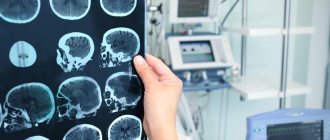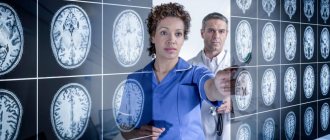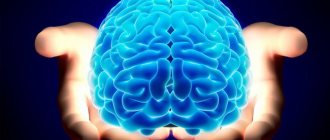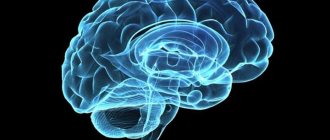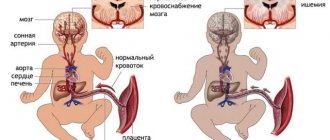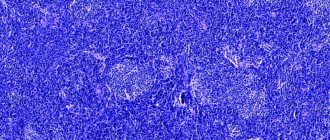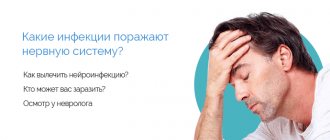Features of the formation of neurosis in a child
Next, consider the origin of childhood neuroses.
Their peculiarity in children is their formation against the background of personality immaturity. To understand, the personality of children is determined by the type of upbringing in the family.
It is worth highlighting the main “inadequate” types of upbringing:
- Insufficient attention to the baby is “hypocustody.”
- Excessive attention is “overprotection”.
- Cruel upbringing.
- Authoritarian parenting.
As a rule, improper upbringing can harm the development of a child’s personality and temperament. As a result, negative character traits and inadequate reactions on the part of the child appear. Sooner or later, this leads to a feeling of inferiority, against the background of which any negative external influence can lead to neurosis. The role of a negative factor can be: a rude word, a loud remark, a change in living conditions and much more.
Given the immaturity of personality in children, typical forms of neurosis rarely develop. More often they have simpler disorders - systemic neuroses. They can manifest themselves in any organ and organ system. It is believed that the choice of damage to one or another organ depends on the hereditary susceptibility (weakness) of the organ or body system. Such weak points in children are often the speech-motor system (formation of stuttering) and the urinary system (development of enuresis).
There is also another development mechanism: a combination of increased nervous tension and the performance of a certain action or movement at this moment. So, this action or movement can lead to the formation of tics in the baby. Thus, neuroses in childhood most often manifest themselves as tics, stuttering and enuresis. In the absence of treatment, systemic neuroses with age often become “classical”, as in adults.
Stuttering is common in children with neuroses.
Diagnostics
As a rule, the diagnosis is made based on the patient's complaints and examination data. Almost all patients with trigeminal neuralgia undergo magnetic resonance imaging of the brain at some stage to rule out a tumor or multiple sclerosis. In addition to computer and magnetic resonance therapy, radiography of the paranasal sinuses is used to identify chronic inflammatory and other pathological processes; OPTG (orthopantomogram) to assess the width of the bone canals.
The patient requires consultation with several specialists: an ENT doctor, a dentist, a neurologist. A preliminary diagnosis can be made by a neurologist based on the patient’s complaints, studying the history of his disease and an objective examination of the face with an assessment of symmetry at rest and when trying to smile.
Over time, symptoms of inflammation of the trigeminal nerve can give rise to neuropathic complications and lead to the development of secondary pain syndrome. In the chronic form of the disease, the auditory and facial nerves are irritated. Without treatment, trigeminal neuralgia can lead to more serious complications, such as dystrophy of the masticatory muscles; decreased sensitivity of the affected area; synkinesis (cooperative movements in which one nerve controls many muscles); contracture and spontaneous contraction of the facial muscles; chronic lacrimation.
Types and symptoms of neuroses
There are such types of general neuroses as:
- Hysteria . In children, this condition manifests itself as an excessive, inadequate reaction to dissatisfaction with something. Children with hysteria often “fake it.” They can achieve what they want by manipulating their parents. Manipulation may involve simulating symptoms of the disease. At the same time, the doctor, examining the baby, does not find objective signs of the disease.
- Neurasthenia . In children it manifests itself as irritability and weakness. It is not uncommon to experience violent reactions to minor remarks or actions. Characteristic symptoms of neurasthenia are also: mood swings, increased fatigue, decreased performance, headache, palpitations, sleep disturbance. Pediatricians, examining these children, often identify well-known vegetative-vascular dysfunction.
- Obsessive states . They develop in children with certain psychological characteristics: fearfulness, suspiciousness, indecisiveness. The formation of various fears is typical from an early age. Most sick children develop a variety of defensive reactions in the form of obsessive actions (flapping hands, frequent hand washing, jumping, etc.). At an older age, obsessive thoughts, doubts, and more may appear. At the same time, children may realize the absurdity of their actions and try to fight them.
Below we consider the most common forms of neuroses in children:
- Tiki . Often preceded by obsessive states and actions. They are characterized by stereotypical contractions of individual muscle groups. At an early age, frequent eye blinking often occurs. As it progresses, other muscle groups may be involved in the process (twitching the nose, opening the eyes, raising the eyebrows, lifting the shoulders, and much more). After suffering from acute respiratory viral infections, such children may develop respiratory tics: coughing, coughing, snorting, etc.).
After suffering from acute respiratory viral infections, children may develop respiratory tics (coughing, coughing, snorting, etc.).
- Stuttering . You can also come across another name - logoneurosis. They are synonymous words. Stuttering is a speech disorder associated with convulsive contraction of individual muscle groups of the speech-motor apparatus. You can find out more about the manifestation and treatment of this problem in our article.
- Enuresis . Represents bedwetting. Enuresis is a neurosis only if it develops against the background of psychological trauma or changes in living conditions (visiting kindergarten for the first time, the birth of a brother or sister, etc.). The connection with the environment and situation in which the baby may be is quite characteristic. Over time, children develop a feeling of inferiority due to their illness. At an older age, negative character traits may appear: lack of restraint, anger, irritability. In some cases, enuresis can develop along with encopresis (fecal incontinence).
Neurosis, like other diseases, goes through a number of conditional stages. The effect of treatment depends on the timeliness of assistance. A fairly simple rule: the earlier the help is provided, the more favorable the effect of treatment .
Symptoms of trigeminal neuralgia
Pain is noted in the area of innervation of one or more sensory branches of the trigeminal nerve, most often the maxillary. The pain is paroxysmal, lasting from a few seconds to 2 minutes, but attacks can quickly recur. The pain is shooting, excruciating, often disabling, and is often triggered by touching trigger points on the face or movements (for example, chewing, brushing teeth, or smiling). Often the patient cannot sleep on the affected side of the face; on average, the attack lasts up to 3 minutes; in about 7% of patients it lasts up to 3 days. Their number can reach 200 per day.
Over time, the pain progresses and may be constant, without intervals. The effectiveness of medications that relieve pain decreases and the patient can no longer control the pain. It becomes exhausting for him. Patients may withdraw from social contacts and daily activities for fear of pain returning.
Pain from trigeminal neuralgia can be observed in different parts of the face. It all depends on which branch of the nerve was affected, if the maxillary - in the area of the facial muscles, upper jaw and nose, the mandibular - the pain will resemble a toothache, the ocular - in the area of the temples, forehead and above the eyebrows. Other characteristic symptoms of inflammation of the trigeminal nerve: spasms of the facial muscles; increased salivation; increased or decreased sensitivity of facial skin; moderate increase in temperature; weakness and muscle pain.
Evsyunina Natalya Borisovna
Pediatric neurologist Physiotherapist
Work experience: more than 15 years
Initial appointment: RUB 3,500.
Repeated appointment: RUB 3,000.
Outpatient care for children from 0 to 18 years old.
Conducting preventive examinations in neurology. Monitoring patients with chronic pathologies and disabled children, drawing up an individual rehabilitation program, preparing extracts and epicrisis for inpatient treatment.
Make an appointment
Causes
Despite countless years of research into nervous tics in children, doctors have not been able to come to a common point of view regarding the provoking factors. But among many theories, it was found that the most likely are the consequences of traumatic influences. These include:
- Fright.
- Fear.
- Divorce of parents or forced separation from one of them.
- Change of environment.
- First of September. The first days of school are extremely stressful for a child.
- The birth of a second child in the family.
Heredity also plays an important role in the occurrence of tics. Children whose parents experienced hyperkinesis in childhood are much more likely to develop it too.
An unstable situation in the family or immediate environment that a child encounters in kindergarten, school, or in the yard is, of course, the main provoking factor. Children's relationships, communication with peers and adults, can be of a very diverse nature. They often contain conflict situations, and they serve as the starting point of nervous disorders.
Organic brain damage can also cause nervous tics in children. Sometimes they are a consequence of the following events:
- severe maternal pregnancy and difficult childbirth;
- traumatic brain injury;
- a previous neuroinfectious disease.
Separately, it should be mentioned that the reasons for the development of tics may be hidden in a lack of any vitamins, minerals or trace elements.
Since the child’s body is just being formed and is very unstable to external influences, hypovitaminosis can cause disturbances or malfunctions of the nervous system. It has been noticed that the disease progresses in waves. If the child is in a calm, balanced mental state, then tic movements may decrease to minimal manifestations or not be observed at all. At the same time, any stressful situation, fear or anxiety, serves as an impetus for exacerbation of the condition and intensification of tics.
Interaction
It is known that tolperisone has an effect on the central nervous system, but despite this there is no sedative reaction. Therefore, there are no restrictions on the use of Mydocalm:
- a muscle relaxant goes well with sedatives;
- used with sleeping pills;
- enhances the effect of antihypertensive medications based on clonidine;
- used with anesthetic agents;
- prescribed along with psychotropic groups;
- interacts with muscle relaxants.
Most often, Mydocalm is combined in one treatment regimen with Milgamma and Movalis for pathological disorders of the musculoskeletal system. This allows you to significantly reduce the pain threshold, relieve spasms, and restore muscle tone. In addition, it has a neuroprotective effect, which eliminates inflammatory processes and stops the degenerative development of diseases.
Treatment
Very often, children who are diagnosed with tic hyperkinesis do not need special therapy. It is absolutely meaningless, and only correction of the patient’s lifestyle helps. However, if the tics become generalized, then treatment cannot be avoided. But which method the doctor chooses depends on the severity of the disease, age and physical characteristics of the child.
An integrated approach to treating tics in children is possible. It includes:
- Activities aimed at properly organizing the child’s daily routine. Protecting him from stress, anxiety and other troubles.
- Drug-free therapy. This complex includes a visit to a psychotherapist, physiotherapeutic procedures, and reflexology.
- Treatment with medications.
At the initial stages of the development of tics in young children, only routine measures are sufficient for visible positive dynamics. Rationally organized time for activities and rest, timely going to bed, proper nutrition, and exercise are the key to a positive outcome from a nervous disorder.
Family psychotherapy is of no small importance. If the situation in the family has given impetus to the development of tics, then you need to try to correct it. Under no circumstances should the child witness quarrels or scandals. It is necessary to create a calm, trusting environment so that the child feels loved and protected. You should not pull back or remind him of his nervous disorder, as this will only aggravate the situation.
Good results in the prevention and treatment of tics are provided by educational games using fine motor skills, art therapy, and relaxation. The most commonly used physiotherapeutic methods to combat this disorder are:
- biofeedback method;
- audiovisual stimulation method;
- acupuncture;
- laser therapy;
- ozokerite applications;
- massage of the cervical-collar area;
- electrosleep.
In cases where drug treatment cannot be avoided, sedatives are first prescribed. They have a general calming effect, remove nervousness and irritability. If the expected effect is not observed, the doctor prescribes tranquilizers. Their scope of action is the relief of emotional stress, anxiety and fears.
With progressive tic hyperkinesis, which is not amenable to gentle treatment, more severe drugs are used. These include antipsychotics and antidepressants. Unfortunately, these medications have a lot of side effects and are used only as a last resort, only as prescribed by a doctor and strictly following the dosage. The main indicator for use is the safety of the child, taking into account the special sensitivity of the not yet formed organism, including the nervous system.
Treatment of tics in children is usually carried out on an outpatient basis, since hospitalization can be an additional source of anxiety. For the same reason, drug therapy is avoided by injection.
Diagnosis and treatment of neuralgia in children
Diagnosis of childhood neuralgia is a detailed examination by a pediatric neurologist and a series of studies depending on the doctor’s observations and analysis of the little patient’s complaints:
- ECG
- X-ray of the lungs
- Electroneuromyography (allows you to determine the speed of impulses and the degree of nerve damage)
- Nerve biopsy (examination of biological material under a microscope)
- Angiography (examination of the vascular system)
A pediatric neurologist prescribes treatment. However, consultation with a pediatrician, cardiologist and neurosurgeon may also be necessary.
To relieve pain and inflammation, the doctor will prescribe analgesics and non-steroids, and, taking into account the individual characteristics of a growing organism, may give a referral for manual therapy, exercise therapy, massage procedures, acupuncture and herbal medicine.
Side effects of Mydocalm
Adverse reactions occur when the drug is taken incorrectly (often uncontrolled self-medication) and against the background of contraindications.
Negative effect of the tablets:
- a sharp decrease in blood pressure;
- nausea and vomiting;
- abdominal discomfort;
- headache;
- muscle weakness.
Side effects from injections:
- difficulty breathing;
- minor loss of coordination of movements caused by muscle weakness;
- heart failure.
In both cases, an allergic reaction is possible:
- skin rashes;
- itching;
- swelling;
- hives;
- shortness of breath and bronchospasm;
- Quincke's edema (affects the face and genitals);
- anaphylactic shock.
